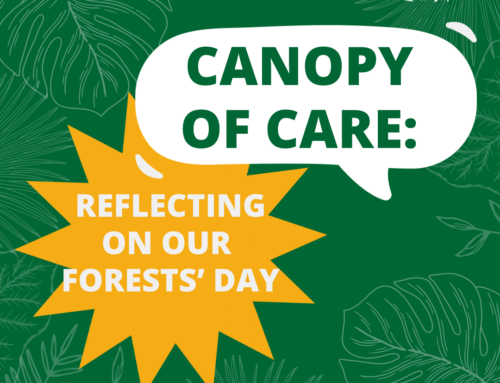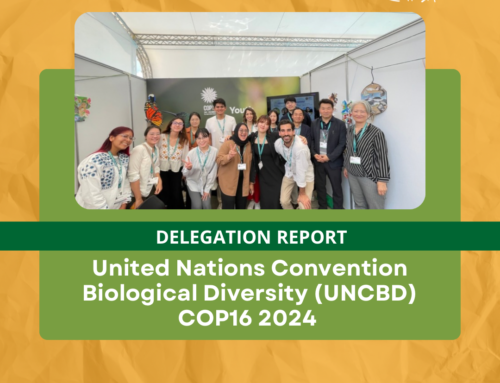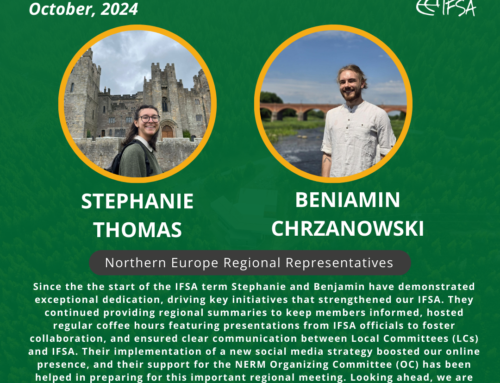GLF Amazonia 2021: A Latin American view
(by Carrera Calle, Vania*; Gutiérrez Sotelo, Joaquín*; Sánchez Chávez, Yamile*)
The Amazon is located in Latin America and is shared by eight countries. It is established in Brazil, Peru, Bolivia, Venezuela, Colombia, Ecuador, Guyana, and Suriname. This ecosystem contains great biodiversity in flora, fauna, and communities. It plays an important role in the regulation of the planet’s climate and life. However, it faces several problems that endanger its diversity, and the ecosystem services it provides.
This is how the question arises: Are we at a tipping point? To this end, the “GLF Amazonia: tipping point, solutions from the inside out” showed the urgency of preserving and restoring the biological and cultural diversity of the tropical forest (Amazonia). It consisted of more than 200 presentations over three days, delivered in Spanish, English, and Portuguese. There were speakers from different countries, some authorities, and members of the communities that live there. The presentations were approached from a natural science point of view, as well as from local actors and main stakeholders in the management of Amazonia. Economic and social proposals were shown, strengthening the solutions with ideas from guests belonging to investment entities, experts in the circular economy, and indigenous communities from different parts of Latin America, all at the same table of dialogue.
The Global Landscape Forum – Amazonia, allowed to highlight the existing challenges within this ecosystem so valuable for the world. Among the main topics discussed were deforestation by agriculture, fires, illegal logging, forest governance as an ideal tool for development and the correct articulation between all stakeholders in sustainable projects in the Amazon, gender equality and the presence of women in decision making, the development of agroforestry projects as an opportunity to promote agricultural production with low impact on forest soils, land-use capacity, among others. During the topics discussed, the importance of each stakeholder in these ecosystems was reinforced. A perspective was shown from wildlife, forest species, and indigenous communities, to land-use, rivers, and ecosystem services; starting from the idea of interdependence between them, and how their impact brings us closer to the tipping point in the context of climate change.
Agroforestry systems are a sustainable strategy developed in the Amazon. This is one of the most viable options to deal with the most recurrent problems in the Amazon rainforest, land-use change by the application of agricultural products. Among the most popular products are cocoa and coffee. Both have high economic potential and low environmental impact in their production. However, the situation was recognized that both products can be used as examples for the increase of deforestation for their application by the villagers. Cases in which it is necessary to work through national and international policies.Migratory agriculture is a problem of great impact in the Amazon. This generates a strong impact in many areas of the Amazon and is of equal magnitude to livestock expansion. One example is Brazil, where migratory agriculture is among the main drivers of deforestation, including indigenous communities that are also affected by the increase in cattle ranching. Science and governance were considered important measures to address this problem. As well, technology is an extremely powerful tool in favor of indigenous communities, who using cell phones, cameras, and the internet, can act to for the care of illegally affected areas and that, in the same way, affect their livelihood.
Regarding indigenous communities, the GLF highlighted the community forest management approach, which involves the different modes and scales of forest harvesting carried out by local communities. This represents an alternative solution to the problems already mentioned. Its members are presented as the main allies in the sustainable use, conservation, and regeneration of ecosystems in the Amazon. However, they are faced with a particular problem, such as drug trafficking, which has claimed the lives of community members. Faced with this, the authorities are not fulfilling the function of preventing and confronting these problems, so it is necessary to demand greater protection and prompt intervention by the authorities in the affected areas. In addition, those of us who live outside of this reality must remain vigilant and make visible the struggle and defense of human and environmental rights.
Since our perspective, as forestry students and young professionals of the sector, the GLF-AMAZONIA, has been an interesting and important space to turn the world’s gaze towards this ecosystem that, little by little is reaching an irreversible point of affectation and that not only the countries that share this Amazonian extension will be affected, but the world itself will be vulnerable. It is rescued that the decision making from a multidisciplinary point of view is the best option for the welfare of all and to reach the so desired sustainable development.
Finally, let us remember that everything is interrelated and that by protecting the Amazon, we can protect our future. That is why it is necessary to act now, promoting research, monitoring, sustainable economic activities, and valuing much more the biological diversity that exists in this ecosystem. At the same time, we must focus on the communities that live in and from the forest. For all this, it is necessary to implement multilevel and interdisciplinary governance.
*National Agrarian University – La Molina, Perú.
Indigenous Women is Ready to Raise their Voice
(by Yeji Lee – IFSA KNU)
This article explains the situation of indigenous women in the Amazon and the experiences and challenges they face. These women suffer from inequities in policies designed to conserve and restore the environment so that these inequities diminish the effectiveness of these policies.
One of the first speakers points out that indigenous women are almost always absent in the decision-making process. This absence denies policymakers the traditional knowledge and techniques that these women know and have used for generations that help protect Amazonia. It is crucial to increase the representation of these women in environmental organizations, and, fortunately, some newer organizations are open to greater indigenous participation.
In furtherance of this goal, education plays a central role.
Traditionally, indigenous women have not been encouraged to pursue education and have been confined to traditional roles. However, by giving indigenous women a path into Higher Education, their participation and leadership can bloom.
Education was also emphasized by another speaker, who also brought up the importance of literacy programs for indigenous women to foster assertiveness in pressing their rights and teaching traditional knowledge to the next generation. This traditional knowledge can gain added efficacy in combination with funding from REDD+ and the Forest Government Partnership Facility of the World Bank. The inclusion of traditional knowledge and the viewpoints of indigenous women will lead to and enhance good governance of forests. A third speaker also says that the usefulness of traditional expertise applies to the environment, like indigenous knowledge of herbal remedies could even help treat various ailments.
Outside the direct purview of environmental organizations, indigenous women must also stand up to administrative misuse (and even abuse) that allows the forest to be changed into agricultural land or does not do enough to prevent illegal land invasions by various people and groups. Through education, the strength of indigenous women in this struggle can be improved.
At the end of the panel, the speakers reiterated the importance of education, both modern Higher Education and traditional knowledge, which together can be used more powerfully for good. This education must also include practical training in bookkeeping, secretarial work, and treasury work that will increase their economic standing and independence. Meanwhile, education on issues like domestic violence will help combat social evils that confront indigenous women. More generally, training in grant application writing could help gain access to more outside resources to assist in many things.
They also emphasized the importance of respectful and equal dialogue on the governance of the forest that also recognizes the rights of indigenous women and respect for their traditions, culture, and language. The voices of women must be respected, and the repetition of past incidents where women had had microphones taken from them when they were speaking must be stopped and not allowed to happen again.
To sum up, People are influenced a lot by the environment in which they were born and raised. In this regard, it is vital to maximize individuals’ capacity no matter where they are.





